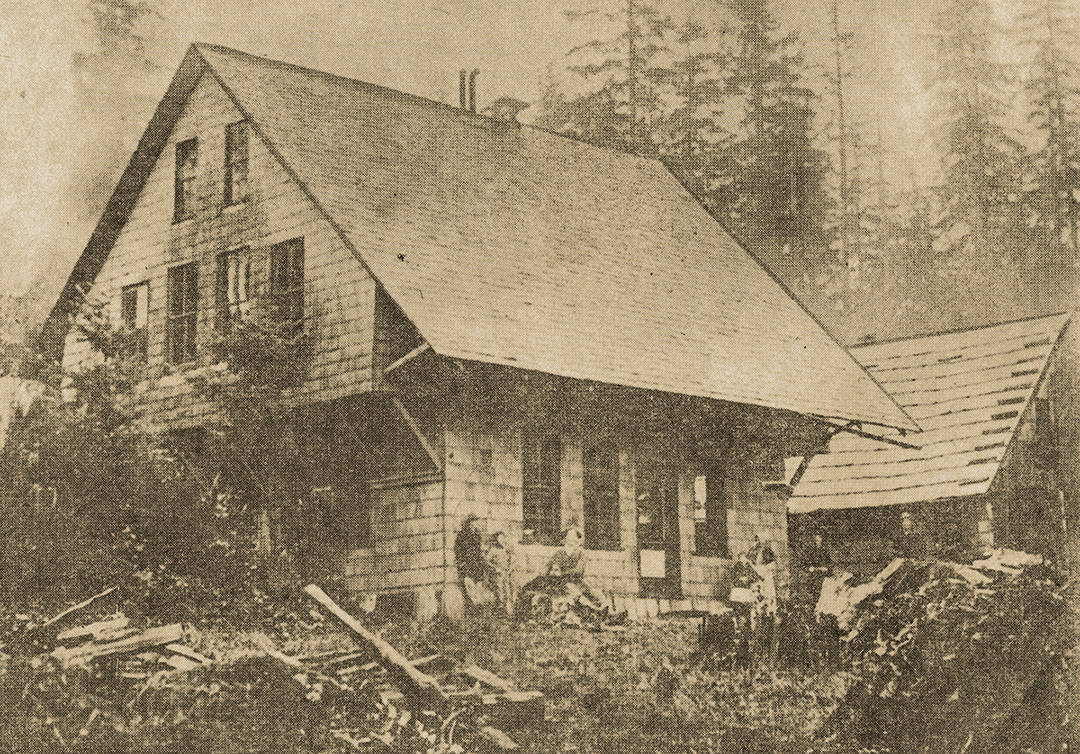In the fall of 1907, Walter Edward Newbert moved his wife and four of their seven children to a home on the bluff overlooking the Pacific ocean near what is now Third Beach. The Newberts were originally from New Hampshire and Walter and his 12-year-old son Vinton had come west to Seattle in 1904. Later the rest of the family joined them and Newbert took a job on the west side of the Olympic Peninsula.
Because of his education as a civil engineer, he was placed in charge of a crew working on the northern end of the proposed Northern Pacific Railway. Assigned to do the survey was Theodore Rixon, Rixon had previously surveyed and timber cruised the original Olympic Timber Reserve. During the survey, just south of La Push, one half of a township appeared in the surveyor’s transit, it was not recorded on the maps of the state land office-officially it did not exist.
Newbert, Rixon and James Dodge, another crew member, decided to take homesteads on the land they had “discovered” Newbert taking two claims; one in the name of his mother.
So it was in the fall of 1907 that most of the Newbert family boarded the steamer Waialeale for a trip to the new homestead. Son Vinton Newbert recalled the trip in a 1962 Seattle Times article;
“It took all day and one night to make the 175 mile trip to Neah Bay. We spent one night there, the town had a trading store run by W.W.Washburn. The next day we were to start our trip to the homestead, which required nearly two days. The trip of 50 miles was by water in a canoe.
The dugout canoe was 35 feet long and nearly 5 feet wide and about three feet deep. We loaded ourselves and supplies into the canoe and took off at about 6 o’clock in the morning. The crew was one young Indian man who steered in the stern and a couple of Indian women who paddled. They did use a sail too. Everything went well until we got to Tatoosh Island, the ocean was choppy and we took on water but the women were quick to bail it out. After we got through the channel we were out in the ocean again. By the end of the day, we were halfway there and we tied the canoe to some kelp at the back of Cake Rock.
The next morning the Indians cut loose from the seaweed anchor and we arrived at La Push about 1 p.m. arriving at our beach about 3 p.m. It seemed there was no chance of getting through the tremendous breakers but the Indians knew their business. They had the canoe turned around stern first toward the shore and waited just beyond the breaking point of the waves; when a big wave came along, all dug in their paddles with power and we followed the wave in.
The Indians helped us unload the food, it was supposed to last us a year.”
The families first shelter was a tent but before long two homes were built. The Newberts were resourceful and used building material obtained from an old oil well abandoned in 1902. During the building of the homes, a minor oil rush was in progress. Oil seepage had been found many places along the beach. Prospectors notified the Newberts that if oil was found they would have to relinquish their homestead rights.
There were difficulties getting the lumber from the oil well building locations to the building site at Taylor point. The family built a shoot and got the lumber to the beach then rafted it to the building site. They devised a cable to get the lumber then again from the beach up to the home site.
In 1909 the Newberts ran a telephone line to Mora, a schoolhouse was built for the Rixon, Newbert and Taylor children. The Taylors had bought out K.O. Erickson’s store at Mora and the Dodge homestead on Taylor point. A son Hiram Will died at the homestead and Mrs. Newbert died there as well in 1912. Eventually, life was just too tough and the homesteaders moved away.
Walter eventually returned to the east coast, most of the newbert children reamained in the Seattle area.



